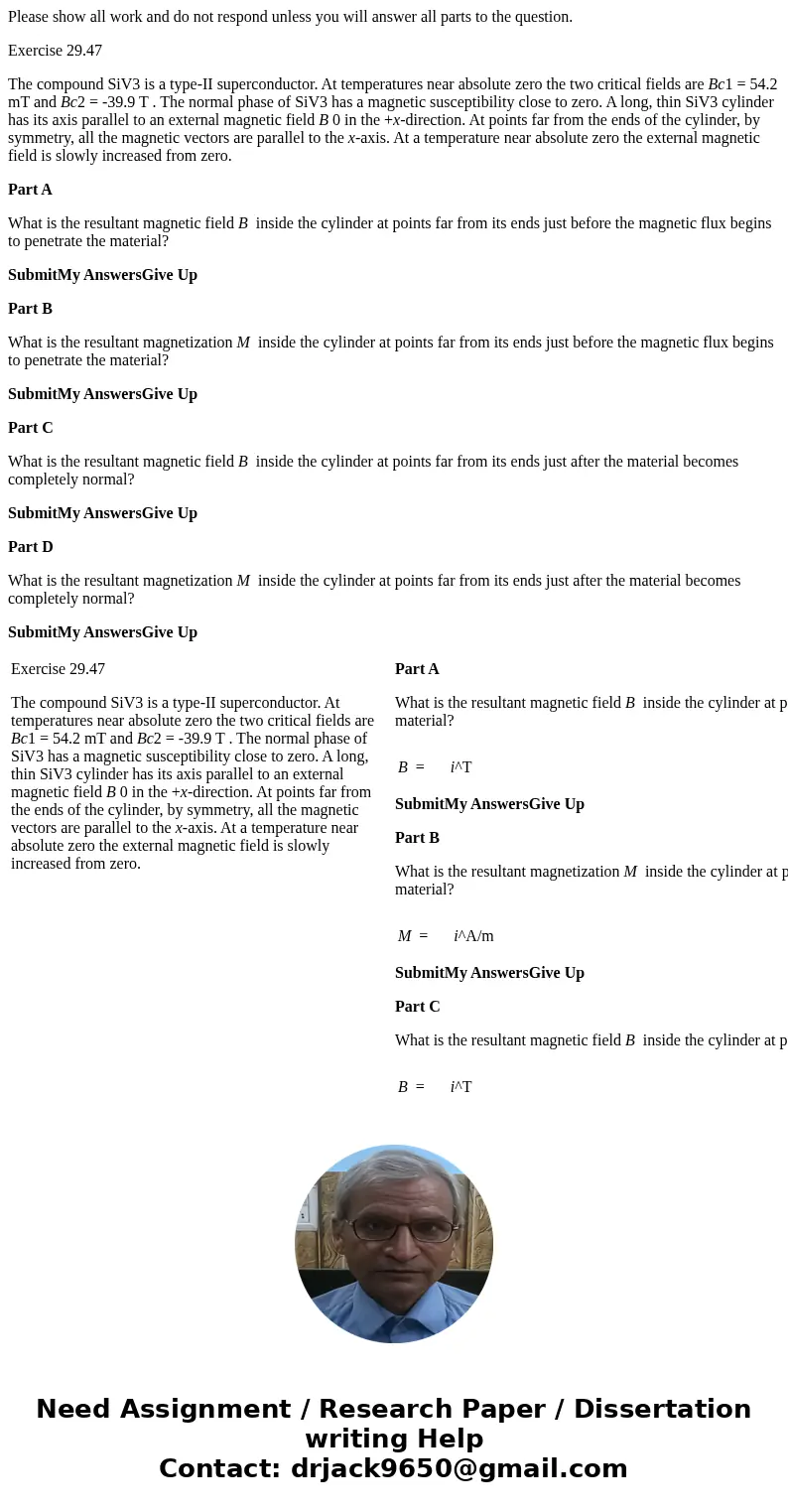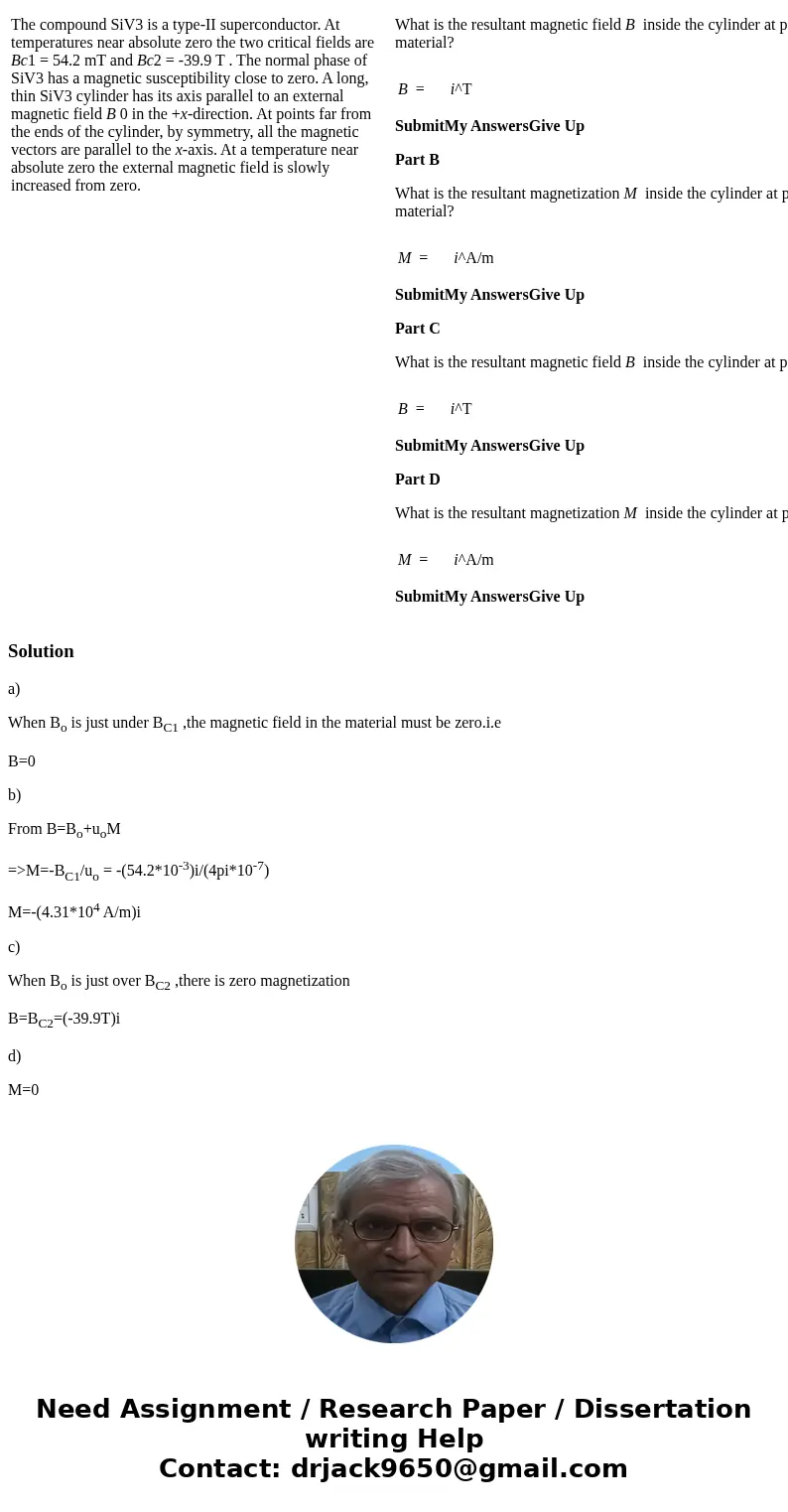Please show all work and do not respond unless you will answ
Please show all work and do not respond unless you will answer all parts to the question.
Exercise 29.47
The compound SiV3 is a type-II superconductor. At temperatures near absolute zero the two critical fields are Bc1 = 54.2 mT and Bc2 = -39.9 T . The normal phase of SiV3 has a magnetic susceptibility close to zero. A long, thin SiV3 cylinder has its axis parallel to an external magnetic field B 0 in the +x-direction. At points far from the ends of the cylinder, by symmetry, all the magnetic vectors are parallel to the x-axis. At a temperature near absolute zero the external magnetic field is slowly increased from zero.
Part A
What is the resultant magnetic field B inside the cylinder at points far from its ends just before the magnetic flux begins to penetrate the material?
SubmitMy AnswersGive Up
Part B
What is the resultant magnetization M inside the cylinder at points far from its ends just before the magnetic flux begins to penetrate the material?
SubmitMy AnswersGive Up
Part C
What is the resultant magnetic field B inside the cylinder at points far from its ends just after the material becomes completely normal?
SubmitMy AnswersGive Up
Part D
What is the resultant magnetization M inside the cylinder at points far from its ends just after the material becomes completely normal?
SubmitMy AnswersGive Up
| Exercise 29.47 The compound SiV3 is a type-II superconductor. At temperatures near absolute zero the two critical fields are Bc1 = 54.2 mT and Bc2 = -39.9 T . The normal phase of SiV3 has a magnetic susceptibility close to zero. A long, thin SiV3 cylinder has its axis parallel to an external magnetic field B 0 in the +x-direction. At points far from the ends of the cylinder, by symmetry, all the magnetic vectors are parallel to the x-axis. At a temperature near absolute zero the external magnetic field is slowly increased from zero. | Part A What is the resultant magnetic field B inside the cylinder at points far from its ends just before the magnetic flux begins to penetrate the material?
SubmitMy AnswersGive Up Part B What is the resultant magnetization M inside the cylinder at points far from its ends just before the magnetic flux begins to penetrate the material?
SubmitMy AnswersGive Up Part C What is the resultant magnetic field B inside the cylinder at points far from its ends just after the material becomes completely normal?
SubmitMy AnswersGive Up Part D What is the resultant magnetization M inside the cylinder at points far from its ends just after the material becomes completely normal?
SubmitMy AnswersGive Up |
Solution
a)
When Bo is just under BC1 ,the magnetic field in the material must be zero.i.e
B=0
b)
From B=Bo+uoM
=>M=-BC1/uo = -(54.2*10-3)i/(4pi*10-7)
M=-(4.31*104 A/m)i
c)
When Bo is just over BC2 ,there is zero magnetization
B=BC2=(-39.9T)i
d)
M=0


 Homework Sourse
Homework Sourse